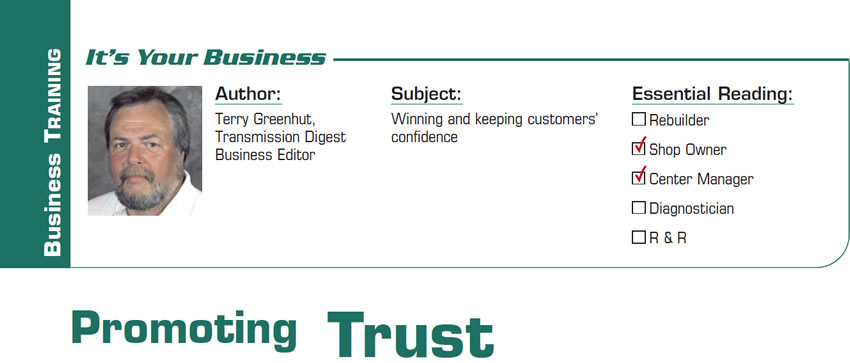November 2009 Issue
Issue Summary:
VW and Audi vehicles equipped with 01M, 01N or 01P transaxles may exhibit a partial or full engine stall during engagement into Drive or Reverse (below).
VW/Audi vehicles equipped with 01M/01N/01P transaxles may exhibit an intermittent torque-converter-slip code after overhaul (page 4).
Volkswagens equipped with the JF506E may experience repeated planetary failures from lack of lubrication. The problem normally occurs after rebuild (page 5).
Any VW model equipped with the JF506E, after rebuild, may exhibit a buzzing noise that sounds as if the unit is low on fluid (page 6).
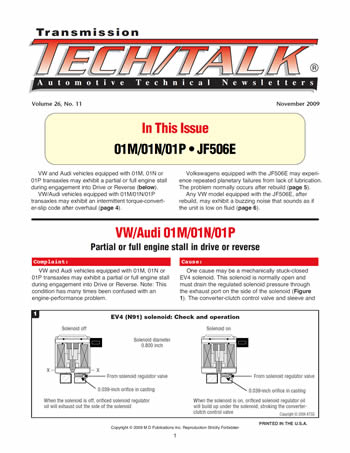
Short-Circuited
In March 2006 Dodge issued safety recall E17 for 2003-05 Dodge Ram pickups equipped with the 5.9-liter diesel and 48RE transmission. This recall addressed a safety issue that could occur if the driver parked the vehicle without placing the gear selector fully in park and left the engine running. The repair consists of a re-flash that when initiated will sound the horn, flash the headlights and cause the PRNDL display to flash if the door is opened and the driver tries to exit a running vehicle without the selector fully in Park. This re-flash can be done only with the DRB-3 scan tool and dealer software.
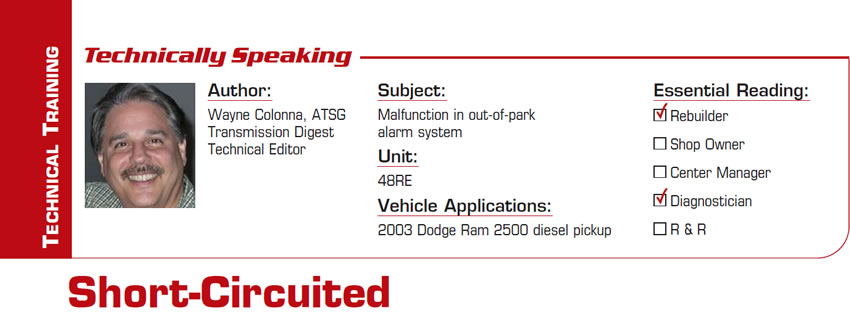
Thinking Outside the Box
After the customer left, I hopped into the vehicle and pulled it up in a bay, noticing that the speedo cluster’s odometer was not lit up, nor was the speedo working. I grabbed a scan tool, and, sure enough, it had a 452 code for loss of speedo signal. I thought blown fuse, because the odometer was not working. I checked the fuse and it was blown.
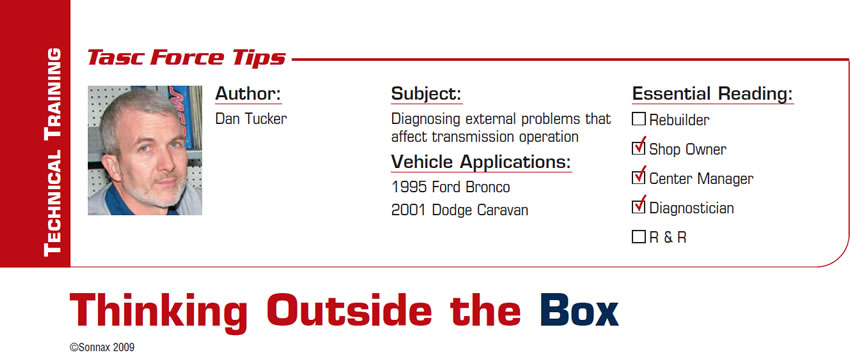
Survival in an Age of Economic and Moral Stress
The lines between dedicated transmission-repair shops and general-repair facilities have become blurred, as trans shops are now doing more general-repair work than in previous times to help cover their overhead and the general-repair shop is now swapping transmissions and other components available through aftermarket rebuilders for the same reasons. It seems that nobody wants to turn away any work that will bring in more cash. This is a natural transition to the change in the repair business that is ongoing but also creates some new problems for suppliers and repair shops.
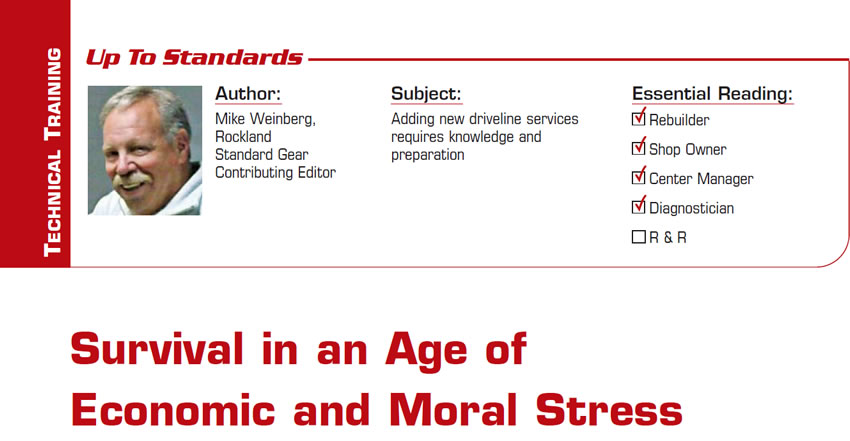
When the Obvious Is not so Obvious
We had a 1995 Ford Super Duty with a 7.3-liter diesel engine and E4OD transmission that had no trouble codes but appeared to be going in and out of TCC lockup at steady cruise speed. If you accelerated hard when this was going on the TCC would engage properly until you came back to cruising speed and there was no more load on the engine. This was a commercial truck that had a heavy air compressor in the back and was always towing a big trailer, so the problem was very noticeable as the truck was being driven.
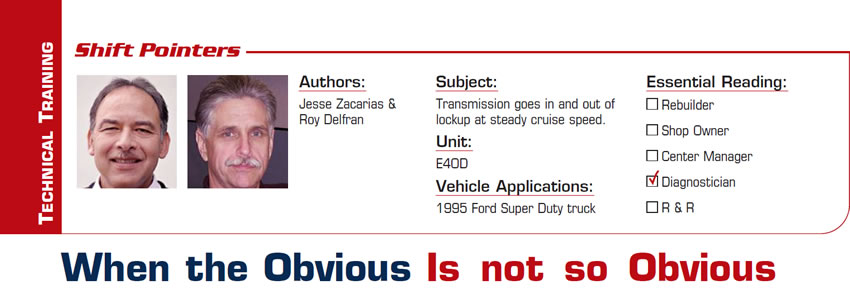
Adventures in engine cooling
The coolant level in the overflow was “full”; however, the level in the radiator was a half gallon low. Even after I topped off the radiator, the engine overheated after running for only 10 minutes. The cooling fan worked, and the temperature of both radiator hoses indicated that the thermostat was wide open. I wondered if there was a circulation issue such as a water pump that decided to fail, or a radiator with internal blockage. The radiator and coolant both seemed clean, and I observed flow when I peered into the radiator neck.
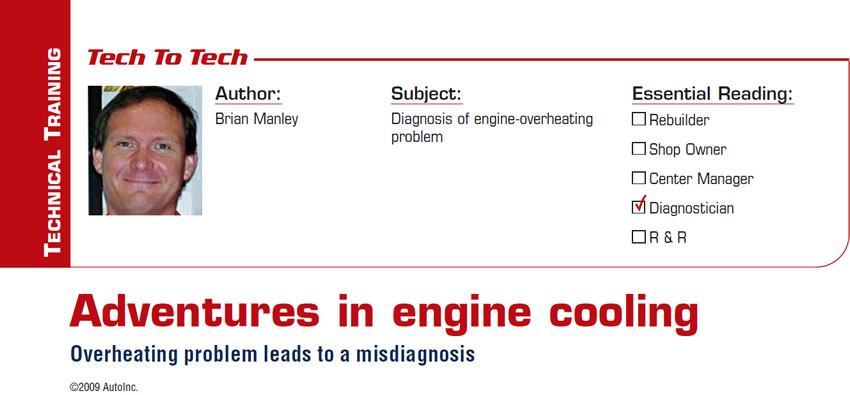
Installer, or Plumber?
Shortly after the installation, the company called our warranty department to report that the transmission was binding in both forward and reverse. It hadn’t been on the road yet because it would barely back out of the bay. They stated that it would roll only a few feet and the transmission would bind to the point of stopping the truck in both forward and reverse. Since our facility that sold the unit was a full-service shop, it was decided that it would be best for the utility company to bring the truck into our shop to diagnose and repair the problem.
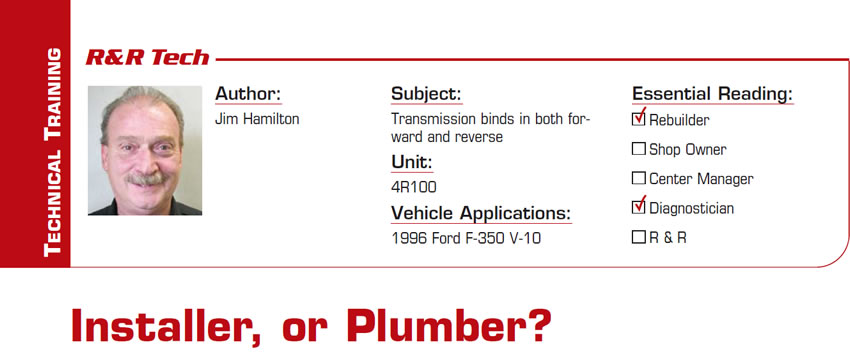
Promoting Trust
The way we sound, look and act along with the way we keep our shops goes a long way toward gaining or losing the trust of our customers. If we present a clean and professional image our customers will be more comfortable and believe that they are going to get a better job, often lowering their resistance to price, making it easier to get the amount we really need.
